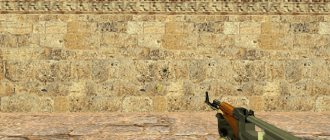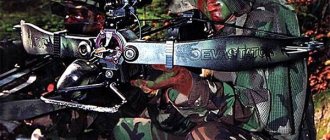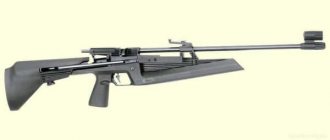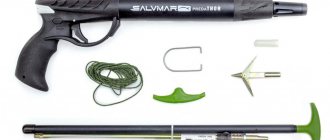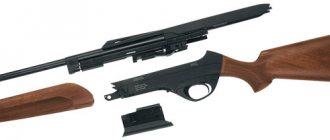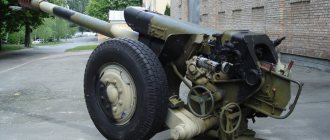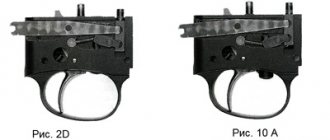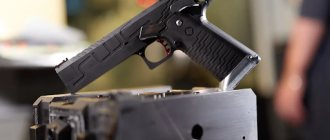Archery is believed to date back to the Paleolithic era, when it was invented primarily as a form of hunting. Archers used the bow and arrow to follow and shoot at dams, often much larger and stronger than at a distance, making the bow and arrow an effective long-range weapon.
But the use of archery was not limited to hunting. In ancient and medieval times, in cultures around the world, being able to shoot a bow and arrow often meant that you were an elite part of your people's military.
While the development of firearms later rendered the bow and arrow obsolete as a weapon, archery has retained its status as a sporting and recreational activity to this day. Beginning in the 18th century, archery societies were formed in many European countries to allow people to practice archery for recreational and competitive purposes.
Then, in the 20th century, the United States did the same with the revival of traditional and indigenous archery practices; American engineers began developing the composite arch in the 1920s, which replaced the traditional arch as the arch of choice in modern times...
Today, bows and arrows are used for both recreation and hunting in countries around the world. While you might not dream of using a bow and arrow to steal from the rich and give it to the poor like a modern-day Robin Hood, you can still get many hours of fun from learning traditional and modern archery techniques...
Choosing the right weapon
The selection of a bow must begin with determining what it is needed for, and the degree of skill must also be taken into account. Based on the types of weapons, there are several of them:
- Traditional. Used for shooting in historical productions, often has national characteristics. It is a wooden arch with a bowstring. It does not have attachments, a sight, or a stabilizer.
- Classic (or Olympic). The shots are more accurate, but you need to put in more effort. The bow may have a sight, a stabilizer to improve accuracy.
- Recursive. It is distinguished by the ends of the arc, bent in the direction of the shot. This form requires more force, but gives an advantage in range and accuracy of the shot. If a beginner “fighter” chooses a bow, then it must be taken into account that good physical preparation is necessary for the success of the event.
- Blocky. It is superior in shot power to other types, since the axes are located at the edges and not in the center. Equipped with a mechanism that facilitates the tension of the bowstring, ensuring proper acceleration of the arrow.
Based on the type of construction, bows are divided into solid and collapsible. The second option is preferable for those who travel far or often to shoot. Depending on age, weapons are produced for adults, children and teenagers.
Traditional Olympic
Recursive
Blocky
Myth 7. Arrows are cheap ammunition.
Still from the series “Knights”
In computer games, arrows are, as a rule, the most accessible consumables. An experienced archer shoots them like a machine gun, creating a real rain of projectiles. So even if a fighter lacks accuracy, this can be compensated by the rate of fire. It is so?
Not at all. Arrows are not at all as cheap as modern RPGs make them out to be. According to surviving reports from the Arsenal of the Tower of London, a standard bunch of 24 arrows cost 1. List of price of medieval items / Berkeley 2. List of prices of medieval items / Berkeley from 10 pence in 1353 to 18 pence in 1399. The archer usually carried a pack of these with him (up to 50 arrows).
That is, the cost of a minute of shooting by an English warrior is equal to approximately one good cow.
It is not surprising that Henry V had to take out a loan from J. Barker. Agincourt: Henry V and the Battle That Made England 10,000 marks from the City of London (approximately 4.5 million today's dollars) to purchase arrows for his army before the Battle of Agincourt. Even though these shells were made from cheap materials, their creation required a lot of manual labor.
That is why after the battle the archers walked around the battlefield and picked up arrows - you will be left without ammunition, and your weapon will turn into a useless stick with which you won’t even be able to really hit anyone. And the medieval Robin Hoods prudently carried maces and daggers with them so that, after shooting, they would engage in hand-to-hand combat.
Practice area and target
Archery is carried out in a specially equipped room or outdoors. In the latter case, it should be a fenced area that excludes the entry of people and animals. The target will help judge the results. It must meet the following requirements:
- be visible and clearly readable from a great distance;
- hold the arrow tightly;
- maintain the integrity of the arrow;
- do not collapse from numerous hits;
- withstand any weather without deterioration from rain, frost, or extreme heat.
Homemade targets do not meet these characteristics and quickly fail. Therefore, it is wiser to purchase a model from trusted companies. There are several types of targets:
- Paper. Made from cardboard, reinforced or thick paper with a grid of multi-colored or uncolored circles, as well as images of people or animals. Dimensions – from 30 x 30 cm.
- Shields can be stationary or portable. They are made of isolon in the form of a flat surface (for attaching paper targets), a cube or a parallelepiped. The dimensions depend on the purpose, type of bow, experience of the shooters, and distance. A cube with sides of 30 cm is designed for hunters; shield 50 x 50 x 20 cm – for recreational shooting; 50 x 50 x 10 cm – for children and teenagers; 65 x 65 x 20 cm – for beginners.
- Electronic. It is a wall screen that displays footage taken in real conditions. The archer uses arrows with a special soft ending. At the moment of the hit, a dot appears on the screen indicating the number of points.
- Children's stands. Today's manufacturers offer a lot of different options for specialized targets, and children's stands are no exception. Most often, such shields are a metal sheet on which markings or a target are applied.
3D targets are also popular. They are reliable, durable, ensure arrow safety and easy removal. They do not accumulate dust and are convenient for transportation.
Paper
Portable shield
Children's
Myth 8. A quiver of arrows is convenient to carry on your back.
Still from the movie “The Hunger Games: Mockingjay”
This is usually how gunslingers do it in movies. Apparently, they are following the example of Geralt of Rivia, who carries his swords behind his back. But in reality, reaching over your shoulder for fresh ammunition every time is extremely inconvenient.
Therefore, the vast majority of D. Glover, C. Grayson. Traditional archery from six continents: the Charles E. Grayson Collection archers at all times—English archers, Mongol horsemen, and even Indian hunters from North America—carried their quivers on their hips, attaching them to their belts.
Ammunition was extremely rarely slung over the shoulder. For example, the Bayeux Tapestry depicts G. Embleton, C. Bartlett. English Longbowman 1330‑1515 four archers at the Battle of Hastings, three of whom carried their quivers correctly and one carried their quivers behind their backs. Apparently, he was taken by surprise and did not have time to gird himself with his equipment as expected. And I forgot my helmet.
Bayeux Tapestry. Image: Myrabella/Wikimedia Commons
And even taking shells out of the belt quiver was not very convenient. So archers, preparing for a volley, could stick several arrows in front of them into the ground in order to have quick access to them. Again, by wounding the enemy with a shell contaminated with soil, it was possible to provide him with blood poisoning or tetanus.
And yes, unlike what we are shown in the movies, the arrows in the quiver were transported with sharp tips upward History of archery: how medieval arrows were transported / Bow International. This was done in order to protect the plumage from weather conditions and accidental damage.
Basic shooting technique
To shoot a bow well, you need to do it correctly. You need to acquire basic knowledge and skills that determine the degree of technical proficiency. The basic elements of the latter are preparing, gripping, drawing the bow, and releasing the arrow. Each of the listed points requires separate study in accordance with the instructions and taking into account nuances and useful recommendations.
Position of legs and torso
When preparing to release an arrow, the archer must take a position that ensures stable balance and the absence of internal muscle movement. Manufacturing options are as follows:
- Open. Achieved by the smallest angle between the hand with the bow and the line of the shoulders. The right leg is pushed forward, the torso is turned towards the target stronger than in other options.
- Lateral. The angle is more pronounced than in an open stance; the feet are almost parallel.
- Closed. The angle is maximum, the right leg is slightly behind the left.
The position of the feet should not change between shots. It is recommended to stand at shoulder width with toes slightly turned to the side. The torso plays the role of a static support.
Bow hold
Right-handed people hold the weapon with their left hand, raising it at a right angle to the spine. The type of grip depends on the position of the hand:
- short. The reverse side of the handle rests against the thumb (its base), the side - against the muscles of the palm. The angle between the wrist joint and the plane of the shot is about 45 degrees;
- average. The angle between the middle part of the hand and forearm is 120 degrees;
- high. The hand is located slightly below the forearm, the area of its contact with the bow handle is the smallest.
The position of the forearm depends on the characteristics of the grip and when shooting should not interfere with the bowstring. To do this, it is necessary to ensure a minimum number of protruding points.
Capture
The method of holding the bowstring can be medium or deep. In the first case, the fishing line is located in the middle of the distal phalanges. The shank is clamped with the index and middle fingers. After completing the grip, the left hand with the bow rises, the right hand pulls the bowstring.
Deep grip is the most common. The hand is positioned at right angles to the string, which is grasped with three (sometimes two) fingers with equal tension. The remaining parts of the hand are as straight and relaxed as possible.
Beginners are advised to grab the line with their front phalanges. As you master the technique, you will gain the skill of working with the very tips.
Bowstring tension
This stage includes the following steps:
- Place the arrow on the string.
- Insert it into the cut in the shank.
- Keep your index finger above the arrow, and your ring and middle fingers below it.
- Grasping the bowstring with your fingers, you need to raise the bow parallel to the ground, pointing towards the target. In this case, the arrow should be a continuation of a straight line passing through the shoulder and arms.
- Twist your left elbow so that it does not interfere with the removal of the bowstring.
The muscles of the arm and back are simultaneously involved in the tension: the scapula is pulled towards the spine. The most popular placement of the hand is below the chin with the little finger and thumb as relaxed as possible. After fixation and aiming, the hand will move along the jaw bone.
Descent
The arrow is fired at the end of the last stage of drawing the bowstring. The main condition for descent is instant, synchronous and complete relaxation of the muscles of the fingers gripping the bowstring. Then it leaves with a minimum error from the shot line.
If the capture was carried out using a release, then the fingers are not directly involved in the descent. The archer presses the hook (or button), which activates the trigger mechanism, releasing the bowstring. Using a release minimizes the degree of deviation of the “projectile” from the shot line, reduces the risk of damage, and improves the accuracy of fire.
When is it time to hunt
Beginners are recommended to visit special clubs. They have the opportunity to try different types of devices and choose the right one. Coach's tasks:
- convey knowledge;
- put up a stand;
- practice the technique.
Before training, be sure to warm up. The first targets should have a diameter of 40 cm. The next ones should have a diameter of 20 cm. Turn the shield over to the white side.
Standard training involves the following stages:
- rack;
- pulling arrows from a shield;
- shot with proper technique and repeat.
Repeating actions helps to achieve the desired effect. When tired, take a break.
How to aim correctly
Before releasing an arrow, you must aim it at the target and keep the front sight in the center of the latter. There are three objects in the archer's field of vision: a target, a sight and a bowstring. The human eye is unable to clearly see three points at the same time. Therefore, the focus of vision should first of all occur on the front sight, then on the target (less clearly) and on the string (vague).
When aiming, it can be on either side of the bowstring . When archery, the hand pulling the line should be in contact with the jaw bones and move smoothly back. The conditions must be met, since their violation leads to an erroneous perception of distance.
When shooting from a compound bow, it is necessary to control the position of the weapon, the optical sight, and the pip-site (an element of the aiming system). When the bowstring is fully drawn, the archer's eyes, the center of the pip sight and the aiming point should be in line. The neck muscles should not be strained too much.
You should hold your breath for a couple of moments before firing. If you release an arrow while exhaling, it will fly above the target, and when inhaling, it will fly below the target. You can also use the method practiced by snipers: do not exhale the air, but let it flow smoothly out of the lungs, while holding your breath at the time of the shot.
Traditional bow: history
Most nations had distinctive product designs. The pinnacle of excellence was reached in Asia, where the composite bow was created and used. When such weapons were invented, materials from hunting were often included. mainly made from tendons, bones and animal horns.
Competitions (shooting, wrestling and horse riding) between males of different ages are still popular among nomadic tribes. The custom of using onions to obtain food has also been preserved.
Safety precautions
When archery, safety should be a top priority. To save life and avoid injury, a number of requirements must be met:
- Before archery, you need to make sure that the weapon is in good working order.
- Unquestioningly follow the orders of the mentor.
- From the moment the arrow is laid, the bow is considered loaded. You can only aim at the target or the floor.
- It is strictly forbidden to aim at people.
- It is forbidden to keep your finger on the trigger even of an unloaded weapon. You can only touch it after aiming.
- It is strictly forbidden to shoot empty, straight up, or with inappropriate objects.
- The bow can only be loaded on the shooting line in the direction of the shield.
- When choosing targets, it is necessary to take into account the type of bow, the force of the ricochet, and the trajectory of the arrow after hitting the target.
- A loaded weapon must absolutely not be disassembled, handed over to anyone, left unattended, or touched without the owner’s permission.
To understand how to shoot a bow correctly and to acquire practical skills, you need to practice regularly. Classes develop patience, perseverance, give self-confidence, teach you to analyze actions, develop concentration, and flexibility of thinking.
Description of appearance
Traditional bow.
The traditional bow has a long shape and is made mainly of wood.
- It can be purchased in disassembled or non-disassembled form; accessories are rarely present.
- In the weapon, you can adjust the length (more or less) and the degree of tension.
- The dimensions and weight of the product are somewhat different for traditional bow models.
- The shape is arched, the bowstring is usually in one position, but different materials can be used.
Several popular models
Traditional models are represented by English long and flat bows, recurve and Japanese bows. Each has its own characteristics, purpose and application features.
Longbow
Longbow bow.
Made from yew.
- Length up to 2.1 m.
- The model has a round cross-section, with a D-shape at the end.
- It is up to 3 cm wide, and the middle of the arc is up to 4 cm, and when grasped, it is up to 6 cm.
- There are no holes for accessories: when shooting, the arrow rests on the archer’s fingers.
- Flight distance – 350 meters.
Flatbow
Flatbow bow.
It has a flat/oval cross-section, the handle may narrow at the stop.
- The width is slightly larger than the previous model. It’s just inferior in strength due to its smaller thickness.
- The height is almost identical to human height - from 1.5 m, which is why it is heavier and less agile when shooting.
- Scope of application – mainly for competitions and hunting.
- The arrow's flight range is 300 meters.
Recursive
Traditional recurve bow.
Differs in cross-section in S-shape.
- The edges are curved in the opposite direction from the arc, there is a strong cutout in the middle of the shelf.
- The shape is reminiscent of ancient models, which are slightly improved.
- Weight is about 1.5 kg, sold disassembled or assembled.
- You can use additional accessories: plunger, stabilizer, shelves (for accuracy of shooting).
- The arrow's flight range is more than 500 meters.
Japanese bows
Japanese traditional bow.
The length is more than 2 meters, the handle is divided proportionally into two sides (upper and lower).
- The bowstring is made of hemp, but some archers use Kevlar. Usually it remains unchanged until it breaks.
- The connecting elements are reinforced with a special adhesive thread to hold and secure the arrow.
- Professional archers approach their training responsibly. It is believed that weapons collect part of the soul in an object, uniting it into a common whole.


